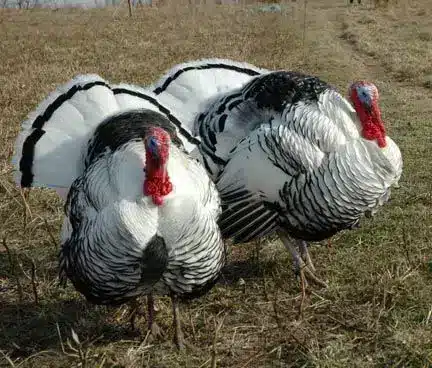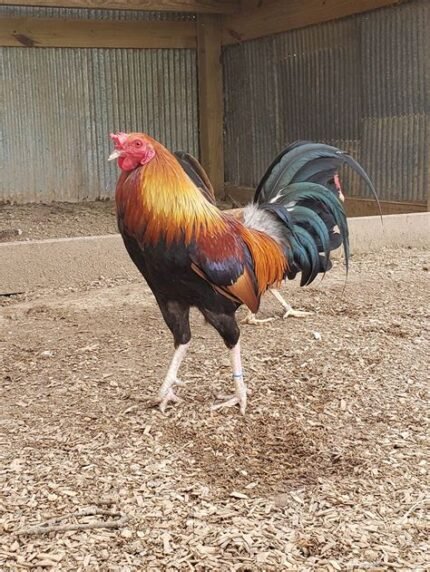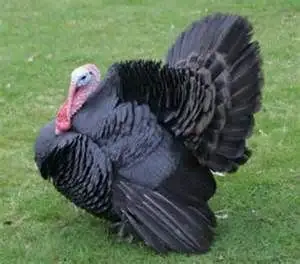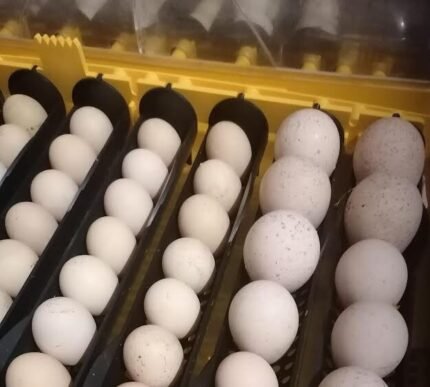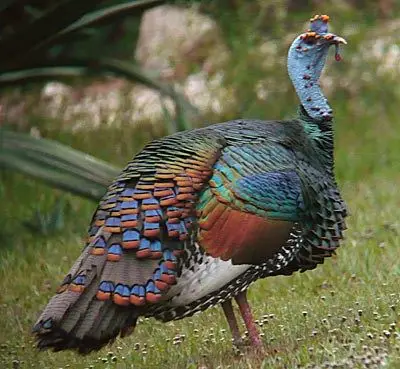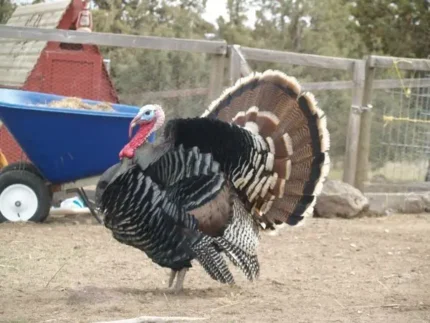
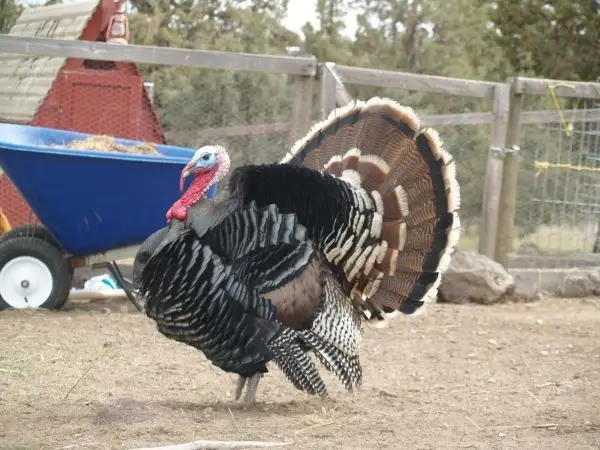
Royal Palm Turkeys
$20.00 – $200.00Price range: $20.00 through $200.00
Looking for stunning Royal Palm Turkeys? At Gamefowls and Turkeys, we offer high-quality Royal Palm turkeys renowned for their unique plumage and friendly temperament. These beautiful birds are perfect for both ornamental purposes and breeding, providing excellent meat quality alongside their striking appearance. Explore our selection today and add the exquisite Royal Palm turkeys to your flock!
Royal Palm Turkeys: The Perfect Choice for a Gourmet Feast with Superior Meat Quality and Flavor
Royal Palm turkey picture a turkey that boasts striking black-and-white plumage alongside exceptionally tender, flavor-rich meat—this is the Royal Palm turkey, cherished by chefs and heritage-food aficionados alike. As commercial breeds increasingly prioritize speed over taste, discerning cooks and sustainable farmers face the challenge of finding a bird that delivers both culinary excellence and ethical stewardship. This article highlights why Royal Palm heritage turkeys excel in taste and texture, reveals ideal cooking methods, outlines sustainable raising practices, guides you to reliable poults and eggs for sale, profiles distinctive breed characteristics, explores crucial conservation efforts, and shares expert culinary testimonials. Embrace a gourmet feast that honors tradition, conservation, and unforgettable flavor with Royal Palm turkeys.
What Makes Royal Palm Turkey Meat a Gourmet Heritage Choice?
Royal Palm turkey meat combines traditional genetics and free-range activity to produce a richer flavor, finer grain, and juiciness unmatched by industrial birds. Heritage status ensures natural mating, slower growth, and active foraging, translating into lean, well-marbled muscle fibers that retain moisture during cooking. By choosing Royal Palms, gourmet cooks tap into authentic taste profiles and support breed conservation while enjoying a premium dining experience.
How Does the Royal Palm Turkey Flavor Profile Stand Out?
Royal Palm turkey meat offers a nuanced, savory character reminiscent of game birds, featuring subtle nuttiness, herbaceous earthiness, and a clean finish.
- Savory depth: Foraging on insects and greens enriches umami notes.
- Nutty undertones: Natural diet contributes mild chestnut aromas.
- Clean aftertaste: Lean muscle fibers eliminate fattiness.
These flavor dimensions converge to create a complex taste that elevates festive and everyday meals alike, leading seamlessly into the meat’s tactile qualities.
What Are the Texture and Juiciness Characteristics of Royal Palm Turkey Meat?
Royal Palm meat exhibits fine-grained fibers and high moisture retention, resulting in exceptionally tender slices and succulent mouthfeel.
- Fine grain: Slow growth yields compact muscle structure.
- High juiciness: Intramuscular moisture remains during roasting.
- Balanced leanness: Breast meat remains tender rather than dry.
This delicate texture enhances flavor absorption from brines and rubs, creating consistently juicy results that set the stage for comparative insights.
How Does Royal Palm Turkey Meat Compare to Commercial and Other Heritage Breeds?
Below is a comparative analysis of Royal Palm turkeys, commercial Broad Breasted White, and Bourbon Red heritage turkeys, highlighting flavor, growth, weight, and texture.
| Breed | Flavor Profile | Growth Rate | Average Weight | Texture Description |
|---|---|---|---|---|
| Royal Palm | Rich, gamey, nutty finish | Slow (24–30 wks) | Toms 16–22 lb, Hens 10–12 lb | Fine-grained, moist |
| Broad Breasted White | Mild, lean | Fast (14–18 wks) | Toms 30–45 lb, Hens 18–25 lb | Coarser, less juicy |
| Bourbon Red | Robust, earthy | Moderate (20–24 wks) | Toms 22–28 lb, Hens 12–16 lb | Tender, moderate moisture |
This table underscores Royal Palm’s superior balance of flavor and juiciness, reinforcing its gourmet heritage appeal.
Why Is Royal Palm Turkey Considered a Heritage Breed?
Royal Palm turkeys meet heritage criteria by sustaining natural mating, exhibiting slow growth, and maintaining multi-year productive lifespans. These characteristics preserve genetic diversity and ensure meat quality rooted in traditional husbandry. Breed recognition by the American Poultry Association and conservation listing by The Livestock Conservancy further cement Royal Palm’s heritage status, connecting farmers and gourmands to time-honored poultry heritage.
Population Status of the Royal Palm Turkey in the United StatesThe ALBC census indicated that only eight of the 25 seasonal hatcheries maintain breeding flocks. These flocks comprise 7,038 Bronze, 4,600 Large Whites, 664 Bourbon Reds, 381 Royal Palms, 62 Black, 60 Slate, 4 White Holland, and 3 Narragansett hens. The SPPA research encompassed hatcheries and private breeders, including both male and female birds, and considered any variety designated by the breeder. The census data for the various varieties were: Bourbon Red 931, Royal Palm 717, Bronze 365, Black 211, White Midget 151, Slate 143, Narragansett 87, Buff 62, White Holland 38, Auburn 27, Lilac 24, Silver Auburn 19, Chocolate 12, Royal Nebraskan 8, Wisconsin 6, and Spotted Neb.Turkey conservation in the United States, P Johnson, 2000
How Should You Cook Royal Palm Turkey for the Best Gourmet Results?
Proper technique transforms Royal Palm’s exceptional meat into a show-stopping centerpiece. By selecting methods that preserve moisture and accentuate natural flavors, you maximize both juiciness and depth.
What Are the Best Cooking Methods for Royal Palm Turkey Meat?
The following list outlines three premier methods for preparing Royal Palm turkey that capitalize on its rich flavor and sleek texture.
- Dry-Brining and Slow Roasting – A salt and herb rub applied 24 hours before roasting ensures even seasoning and moisture retention while gentle heat develops a crisp skin.
- Smoking on Fruitwood – Low-temperature smoking over apple or cherry wood infuses subtle sweetness and tenderizes the meat without overpowering its innate nutty notes.
- Herb-Basted Spatchcock Grilling – Splitting and flattening the bird allows rapid, even cooking; basting with garlic-thyme butter enhances succulence and develops charred complexity.
Each of these methods amplifies Royal Palm’s distinctive traits, paving the way for detailed technique insights.
How Do Cooking Techniques Enhance Royal Palm Turkey’s Flavor and Texture?
Slow roasting after dry-brining induces osmotic seasoning, drawing salt into muscle fibers for uniform taste and locking in juices. Smoking at 225 °F over fruitwood deposits aromatic phenols on the surface, creating a subtle smoky crust that contrasts with the tender interior. Spatchcock grilling maximizes even heat exposure and encourages Maillard reactions, delivering crisp skin and succulent meat. By tailoring technique to Royal Palm’s fine grain and leaner composition, chefs achieve perfect balance between texture and flavor.
What Are Recommended Pairings for Royal Palm Turkey Dishes?
To complement Royal Palm’s savory-nutty profile, pair with ingredients that enhance earthiness and brightness.
- Herbs and Citrus: Rosemary, sage, and orange zest add aromatic lift.
- Side Vegetables: Roasted root vegetables like carrots and parsnips highlight sweetness.
- Wine Pairings: Medium-bodied Pinot Noir or Gewürztraminer balance richness.
These complementary flavors accentuate the turkey’s gourmet character and guide the palate toward a cohesive feast.
How Can You Raise Royal Palm Turkeys for Premium Meat and Sustainable Farming?
Raising Royal Palms supports breed preservation and yields healthier, tastier birds when proper care, nutrition, and habitat management are observed.
What Are the Key Care and Management Practices for Raising Royal Palm Turkeys?
Royal Palm care prioritizes balanced nutrition and low-stress environments.
- Mixed Grain Rations: Balanced poultry feed supplemented with cracked corn and legumes.
- Clean Shelter: Secure, well-ventilated housing with dry bedding to reduce disease risk.
- Routine Health Checks: Regular inspection for parasites and vaccination as recommended.
Maintaining these practices ensures robust growth, optimal meat quality, and a foundation for free-range success.
How Does Free-Range Foraging Benefit Royal Palm Turkeys and Meat Quality?
Allowing Royal Palms to forage enriches their diet with insects, seeds, and grasses, increasing protein variety and contributing nuanced flavor compounds. Free-range activity also builds stronger muscles and enhances natural fat distribution, leading to firmer texture, higher nutrient density, and deeper taste.
This sustainable approach reduces feed costs and supports ecological balance in pasture systems.
What Are the Natural Breeding and Reproduction Traits of Royal Palm Turkeys?
Royal Palm turkeys exhibit strong broody instincts and natural mating behaviors, eliminating the need for artificial insemination. Hens reliably set and hatch fertile clutches of 10–12 eggs, with robust poults that thrive under maternal care.
This self-sustaining reproduction model fosters genetic stability and reduces dependence on hatchery supply.
Where Can You Buy Royal Palm Turkeys, Poults, and Eggs for Your Gourmet Farm?
Securing healthy stock and hatching materials from reputable breeders is essential for establishing a thriving flock.
Where to Find Reliable Royal Palm Turkey Poults and Breeding Stock?
Seek hatcheries that adhere to strict biosecurity and breed standards recognized by the American Poultry Association. Local heritage-poultry associations often maintain vetted breeder lists, ensuring access to disease-free poults with documented lineage and breed purity.
Identification of the Royal Palm Turkey BreedThe Royal Palm exhibited unique haplotypes. When integrated with prior research, we propose that the Royal Palm may represent a distinct breed.Additional Molecular Evidence that The Royal Palm is Probably a Turkey Breed, EJ Smith, 2019
How to Choose Quality Royal Palm Turkey Eggs for Hatching?
Select eggs weighing between 80–90 grams with clean, uncracked shells and uniform shape. Confirm breeder records of fertility rates above 85% and observe incubation protocols that maintain 55% humidity and 99.5 °F temperature for optimal hatchability.
What Should You Look for When Selecting Royal Palm Turkey Breeders?
Prioritize breeders who provide health clearances, genetic background, and flock management details. Evaluate:
- Disease History: Verified negative status for common poultry pathogens.
- Flock Management: Pasture rotation, vaccination schedules, and feed practices.
- Customer Reviews: Testimonials on poults vigor and breeder support.
These criteria safeguard flock health and future meat quality.
What Are the Distinctive Characteristics and Temperament of Royal Palm Turkeys?
Beyond gourmet meat, Royal Palms captivate stewards with their elegant appearance and amiable disposition.
How Does Royal Palm Turkey Appearance and Plumage Make It Unique?
Royal Palms display striking white feathers edged in metallic black, creating a lace-like contrast that attracts exhibitors and backyard enthusiasts. This ornamental plumage functions as both a heritage hallmark and a visual indicator of breed purity.
Behavioral Characteristics of the Royal Palm TurkeyIn our studies, the Blue Slates, Bourbon Reds, Black Spanish, and BUTs exhibited more manageable temperaments compared to the Royal Palms and Narragansetts because…Immunologic Function of Historic vs. Commercial Turkey Breeds, Unknown Author, 2001
What Is the Typical Size and Weight of Royal Palm Turkeys?
| Sex | Average Weight | Growth Timeline |
|---|---|---|
| Tom | 16–22 lb | 24–30 weeks |
| Hen | 10–12 lb | 24–28 weeks |
These weights support a gourmet yield without the oversized carcass of commercial breeds.
How Does Royal Palm Turkey Temperament Affect Farming and Handling?
Royal Palms are calm, curious, and intelligent, exhibiting friendly foraging behavior and low aggression. Their docile nature facilitates handling during routine checks and encourages harmonious pasture integration, promoting both animal welfare and farm efficiency.
Why Is Conservation Important for Royal Palm Turkeys and Heritage Breeds?
Conservation ensures genetic diversity, sustainable farming, and continued access to premium flavor profiles that modern agriculture often neglects.
What Is the Conservation Status of Royal Palm Turkeys?
The Livestock Conservancy lists Royal Palms as “Watch,” indicating fewer than 5,000 breeding birds nationwide. This status highlights the critical need for breed stewardship to prevent further decline.
How Do Royal Palm Turkeys Contribute to Biodiversity and Sustainable Farming?
Royal Palms support integrated pest management through active insect foraging, reduce feed inputs via pasture grazing, and preserve heritage genetics vital for long-term resilience. These roles advance agroecological balance and diversify farm ecosystems.
Who Was Enoch Carson and What Is His Role in Developing the Royal Palm Turkey?
Enoch Carson, a Florida poultry breeder in the 1920s, selectively crossed Bronze and White Holland turkeys to create the Royal Palm’s distinctive plumage and heritage traits. His pioneering work established genetic lines now safeguarded by breed associations and conservationists.
What Are Expert Opinions and Culinary Testimonials on Royal Palm Turkey Meat?
Leading chefs and gourmands attest to Royal Palm’s unique palate and exceptional performance in gourmet kitchens.
What Do Chefs Say About the Flavor and Cooking of Royal Palm Turkey?
“Royal Palm delivers a depth of flavor akin to game birds while retaining classic turkey character,” notes a renowned farm-to-table chef.
How Do Food Critics and Gourmet Enthusiasts Describe Royal Palm Turkey?
Food critics praise Royal Palm’s balance of savory richness and lean texture, describing the meat as “remarkably clean” with “lingering herbal notes” when prepared with fresh rosemary and citrus brine. Enthusiasts highlight its ability to absorb spice rubs and complementary sauces without losing its core flavor.
What Are Success Stories from Small Farms Raising Royal Palm Turkeys for Gourmet Markets?
Several boutique farms report that offering pasture-raised Royal Palm turkeys at farmers’ markets commands premium pricing and fosters customer loyalty. Specialty butchers cite repeat demand based on taste consistency and ethical provenance, showcasing Royal Palm’s commercial viability in niche gourmet sectors.
Royal Palm turkeys unite conservation and culinary excellence, delivering a heritage breed experience that enriches both farm and table. By selecting this rare turkey, enthusiasts support genetic diversity, sustainable foraging systems, and premium flavor profiles unmatched by conventional poultry. Whether roasting for a festive gathering or raising day-old poults on pasture, Royal Palm turkeys exemplify how tradition and taste can thrive in modern gastronomy.
| Quantity |
Male ,Female ,Chick |
|---|
